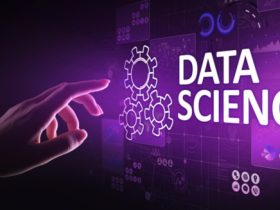The word ‘edge’ is a distinct and autonomously owned and executed. Edge depends on the use cases as the vehicle can be stated as an edge while mobile can be called as the edge in the telecommunication field.
In the manufacturing field, the machine can be said as an Edge. And all above examples of edge produces some data so these have been put in the edge category.
What is Edge Computing?
Edge Computing is a distributed architecture (mesh network of micro data centers) that can save or process data in a logical way. It has also a capability of placing the received data to the central data center.
Besides, it can also put this data into a cloud storage repository and this data can be aggregated to minimize this extent before sending it to the further processing.
Moreover, it is also featured with a great attribute of sending the sensitive data directly to the cloud for the analysis of the big data. Edge computing is also one of the most useful terms when historical analysis and storage of data is required for a long period.
Internet of Things (IoT) plays a vital role where all the enabled devices transfer data to a local device including the great storage connectivity.
Needs of Edge Computing:
For the IoT solutions, Edge Computing gonna be providing the next level answers in future with great efficiency. It will also very helpful in building the strong, scalable and stable solutions for IoT.
The implication of the edge computing has been drastically increasing and it can clearly be seen across various industries. The most probable reason is the cost of computing that decreases where other things try to connect from it.
Most of the management and data processing from the sensors are executed in the AWS cloud. AWS IoT provides an SDK to connect your hardware sensor devices or mobile credentials.
With the help of this SDK, we can connect devices with the authentication as well as exchange messages with AWS IoT (Internet of Things). The MQTT (Message Queuing Telemetry Transport – client/server protocol) and the standard internet HTTP 1.1 protocol are sustained by it.
Being an appropriate approach, it is intelligently designed with the IoT spaces, particularly with the primary prevalence.
Here, we’re mentioning the future and recent needs of the edge computing:
Edge Computing in Healthcare:
Healthcare industry has been transformed by the arrival edge computing where hospital and clinics are providing the best care to their patients.
Some wearable health monitors are enabled to analyze pulse data or sleeping ways without using the cloud. Besides, doctors can also evaluate the exact position of the health providing better suggestions and medication to patients with a great analysis.
Other great examples of cloud computing are smart-watches, fitness tracker, glucose monitors, and other health-monitoring wearable available for us.
Edge computing in Energy Sector:
Edge computing is drastically useful for the energy-producing industries that reduce the power loss making the energy equipment reliable and efficient. It could show particularly powerful across the energy industry for safety monitoring in the oil and gas sectors.
Besides, it is also helpful in the grid control operation where sensors could analyze or calculate the energy produced by all. Thus it helps in making decisions minimizing a cost with more efficient energy production.
Edge Computing in Agriculture:
Edge computing is making the agriculture field digitalized providing it to remote locations and unfriendly conditions of the land to the farmers.
They could use edge computing to monitor temperature, the efficiency of equipment, and slow or shut down of the various devices. For example; a motor pump.
Edge Computing in Commuting Sector:
We can’t skip the utility of edge computing in commuting sectors where companies use the device enabled with the Internet of Things (IoT). Here, computing services help them in exploring the accurate place of parking thus reducing the important time of the companies called as downtime.
Many Artificial Intelligence algorithms work in optimizing parking spaces with the collection of real-time traffic.
Is edge computing essential for the Internet of Things?
IoT is growing continuously producing large data and managing such data is a big challenge so edge computing has been drastically successful in the execution of all this data. Here, edge computing has become essential for the Internet of Things in the following manner:
Cost of IoT Solutions:
With edge computing, you can only store the significant data and the data you want to back up. Hence, the cost of the cloud will go down and the amount of data will also be reduced running back, between and forth between the cloud and edge of the network.
Most of the renowned IT Services of the world take a great lead offering professional services and thus bring more people realizing the benefits thoroughly.
Response Time:
Since edge computing is becoming the future of the Internet of Things (IoT) which has the capability to process critical data responding back in real time. With the great latency, the data is stored here with the processing in a local database.
Hence, the computing can be done in real time with the instant analysis of data as the edge computing is poised to help independent vehicles avoiding collisions.
Data security:
Data security is one of the most important aspects for companies to be considered and the edge computing also limited some industries from using the cloud. It is very important for the companies to refine out sensitive classified information with the local processing and edge computing is capable of doing so.
The most possible reason for the company of using the edge computing is the security because when data sends out from one device to cloud, the risk of leaking data increases drastically.
Enhanced Resiliency:
Edge computing provides a decentralized architecture by which connection of multiple devices can be made, provides resiliency.
Once we link it to the solo virtual machine on the cloud, may cause to a negative impact of thousands of devices if millions of IoT devices are not joined with a network. Hence, it continues to be operational even if one device fails sometimes.
Let us know what you think about Edge computing for IoT in comment section below.
See also : Smart agriculture using Internet of Things
See also: Cybercrime a trending issue of Digital World
If you like this article subscribe our YouTube Channel for IoT video Tutorials.










1 Review